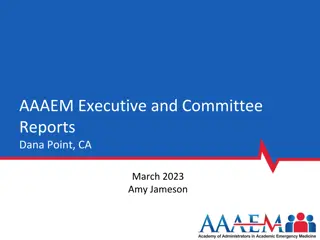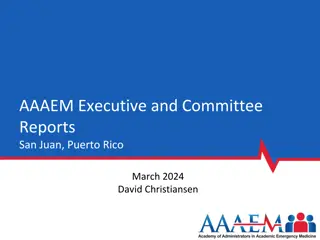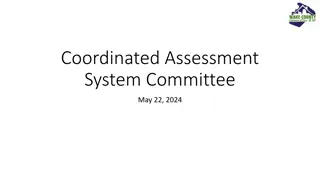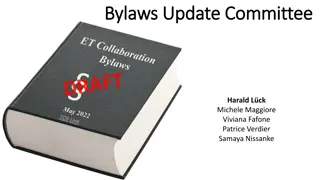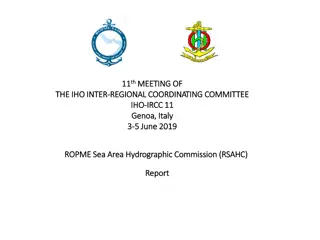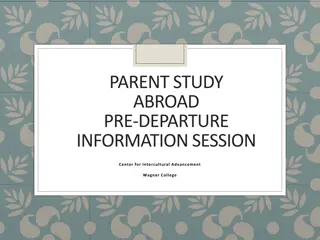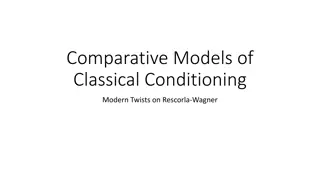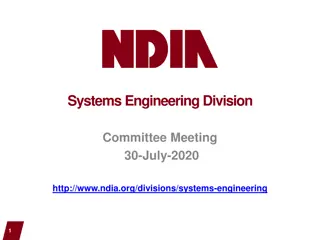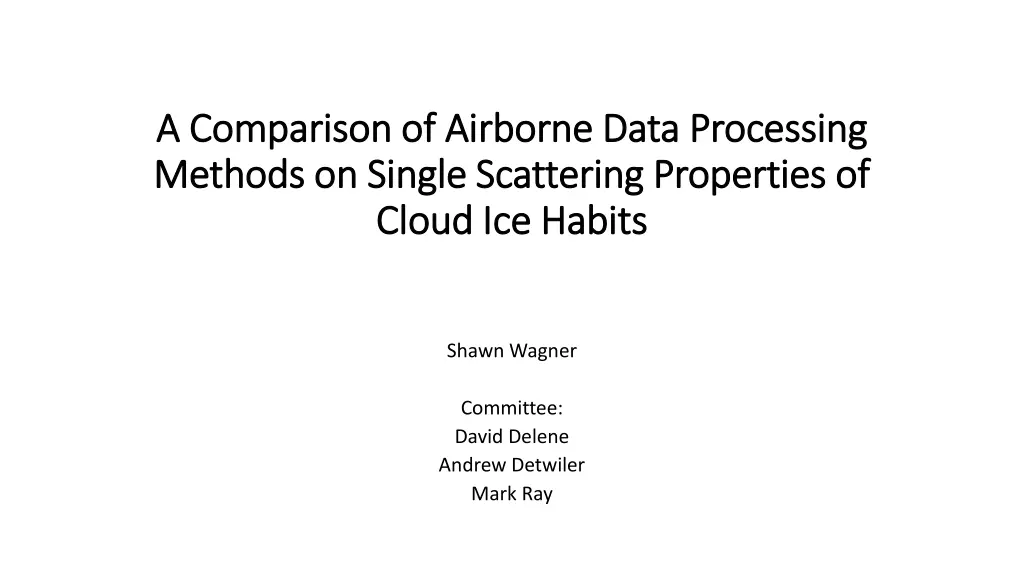
Comparison of Airborne Data Processing Methods on Cloud Ice Habits
Explore the impact of different data processing methods on single scattering properties of cloud ice habits, with a focus on high-altitude jet engine ice induction and FAA regulations. The study aims to compare aircraft probe-derived backscatter with LIDAR system backscatter and assess uncertainty levels in sizing and habit classification. Methodology involves analyzing Optical Array Probe data processing methods and examining resulting differences in calculated backscatter. Expected results indicate that Reconstruction method may produce more small particles.
Uploaded on | 1 Views
Download Presentation

Please find below an Image/Link to download the presentation.
The content on the website is provided AS IS for your information and personal use only. It may not be sold, licensed, or shared on other websites without obtaining consent from the author. If you encounter any issues during the download, it is possible that the publisher has removed the file from their server.
You are allowed to download the files provided on this website for personal or commercial use, subject to the condition that they are used lawfully. All files are the property of their respective owners.
The content on the website is provided AS IS for your information and personal use only. It may not be sold, licensed, or shared on other websites without obtaining consent from the author.
E N D
Presentation Transcript
A Comparison of Airborne Data Processing A Comparison of Airborne Data Processing Methods on Single Scattering Properties of Methods on Single Scattering Properties of Cloud Ice Habits Cloud Ice Habits Shawn Wagner Committee: David Delene Andrew Detwiler Mark Ray
Background Ice induction in high altitude jets reducing thrust / extinguishing exhaust The Ice Particle Threat to Engines in Flight (Mason, Strap, Chow; 2006) FAA regulations on ice crystal icing (ICI) conditions Airworthiness Directive 2013-24-01 Issued and effective 2013/11/27 Applies to several Boeing models ICI conditions must be detectable by aircraft with a notification system Ice habits have individual scattering and absorption properties Yang et al. 2000, 2005, 2015, etc. Backscatter can be used for detection and/or classification of ice particles
Goal/Purpose will compare aircraft probe derived backscatter to the backscatter from a LIDAR system. Method of LIDAR verification Must know size distributions and habits What are the uncertainty levels in sizing and habit classification? Which is the dominant factor?
Methodology Compare 3 Optical Array Probe data processing methods Reconstruction, All-In, Center-In Differentiated by how they handle partially captured particles A Computational Technique for Increasing the Effective Sampling Volume (Heymsfield and Parrish; 1978) Processed using Community Packages for Airborne Science (CoPAS) Each should produce at least slightly different size distributions Poisson counting statistics for uncertainty in sizing sqrt(# particles) / (total # particles observed) Determine the resulting difference in calculated backscatter Repeat the process assuming different monodispersed habit structures for habit related uncertainty
Equation(?) http://reef.atmos.colostate.edu/~odell/at652/lecture_2013/lecture8b.pdf Need to find original source of equation
Expected Results Reconstruction should produce more small particles than center-in and all-in More small particles should theoretically increase the amount of calculated backscattered radiation Reconstruction should produce consistently higher amounts of backscatter Since cirrus clouds are more likely to be of a consistent habit the particle size-distribution will likely be more influential than the habit assumption. Habit assumption is of secondary importance and can be disregarded

